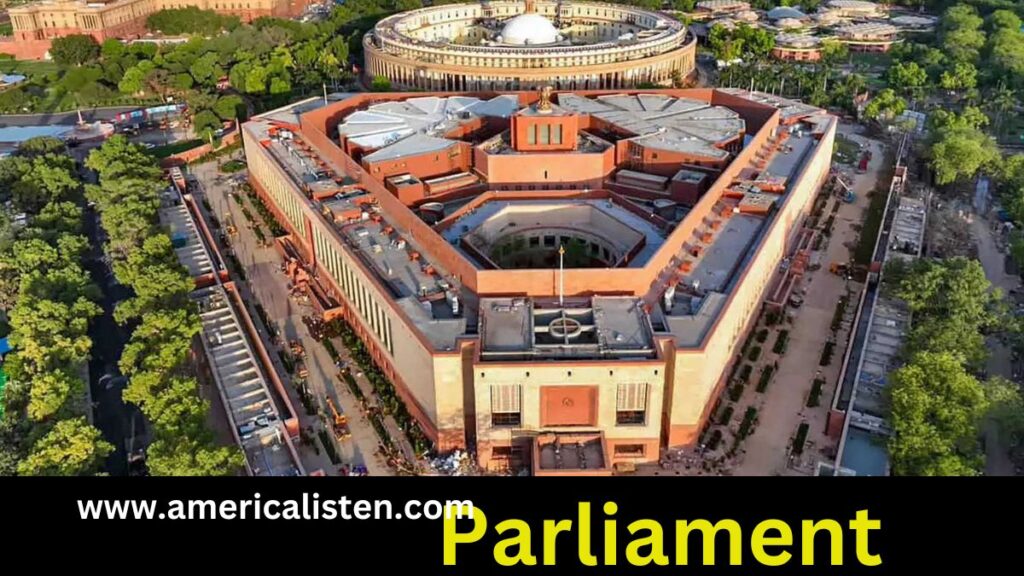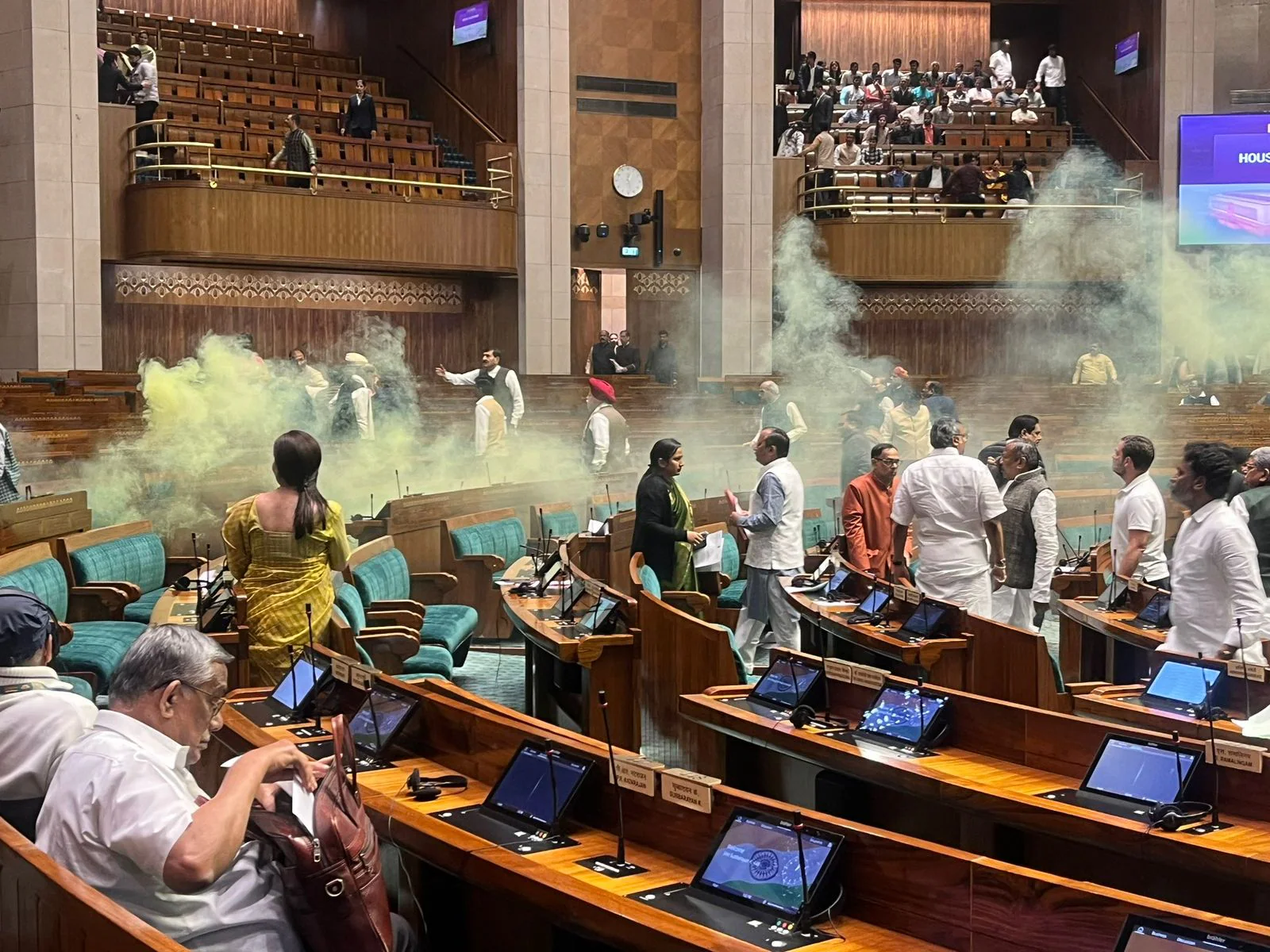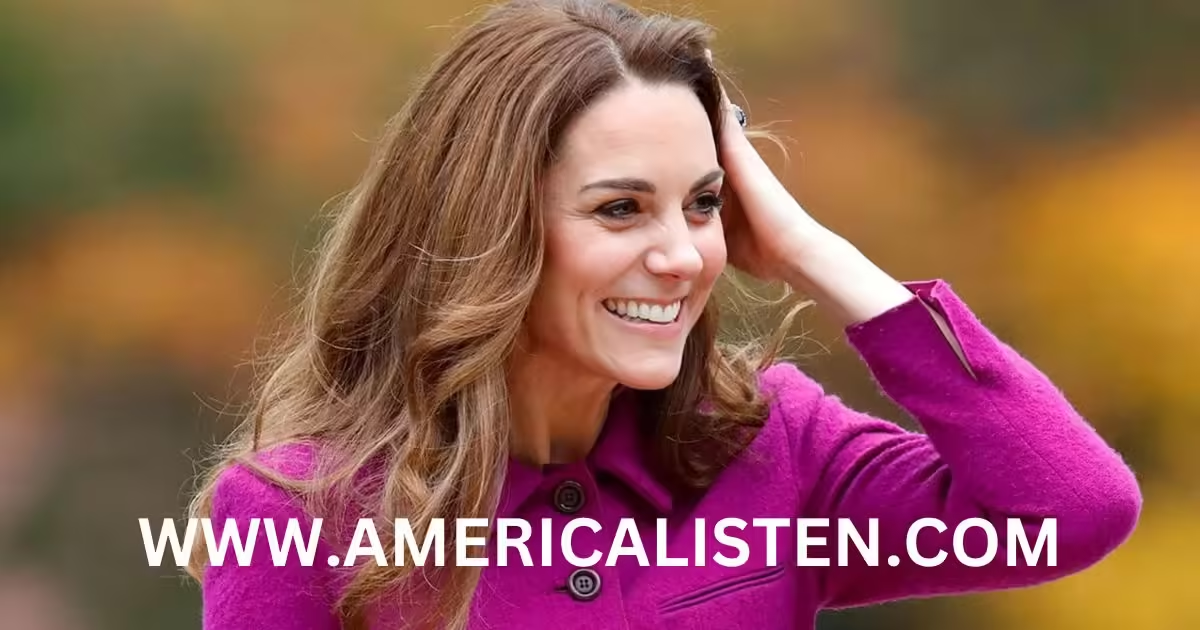In a significant security incident coinciding with the anniversary of the 2001 Parliament attack, four individuals have been apprehended for breaching security protocols by carrying smoke canisters emitting unidentified yellow smoke. The breach occurred in two separate incidents, where two men, each equipped with smoke canisters, leaped from the visitors’ gallery and entered the Lok Sabha chamber. Concurrently, another incident unfolded outside Parliament, involving a man and a woman who were detained while carrying smoke canisters that discharged red and yellow smoke.

Sources from the Delhi Police informed NDTV that both incidents are likely interconnected, prompting the initiation of an investigation by the Delhi Police’s Special Cell into the dual breaches.Subsequent to the breach, security measures in the vicinity have been heightened.The Lok Sabha reconvened at 2 pm, and Speaker Om Birla delivered a brief statement acknowledging the ongoing inquiry. “We are investigating the matter and have asked Delhi Police to join the inquiry,” he announced, addressing the understandably agitated MPs. Overcoming the initial shock of the intrusion, the MPs not only summoned the courage to subdue the intruders but also physically restrained one of them, delivering blows before surrendering him to security personnel.
On Wednesday around 1 pm, Manoranjan D and Sagar Sharma leaped from the visitors’ gallery into the Lok Sabha chamber. A video capturing the incident revealed Sagar navigating desks toward the Speaker’s chair, with Manoranjan deploying yellow smoke from one of the canisters. Sagar also reportedly used a canister concealed in his shoe before being subdued.
Footage from inside the Lok Sabha chamber depicts a group of MPs apprehending Sharma, with at least four of them administering blows. One MP is seen pulling Sharma by the hair while others continue their assault. The video illustrates yellow smoke enveloping the MPs during the confrontation. Several MPs, including Karti Chidambaram of the Congress, have called for a comprehensive inquiry into the breach, marking 22 years since the Parliament terror attack that claimed nine lives, including eight security personnel.Speaker Om Birla reiterated the ongoing investigation, and proceedings in the Lok Sabha resumed at 2 pm.
To know More About Indian Parliament Please Click Me
The opposition additionally pressed for a statement from Home Minister Amit Shah regarding the breach. MPs from the INDIA bloc staged a walkout from the Rajya Sabha in response to the incident.Congress leader and Rajya Sabha MP Jairam Ramesh posted on X: “INDIA parties walked out of the Rajya Sabha this afternoon on the issue of the extraordinary events in the Lok Sabha today and the refusal of the Home Minister to make a statement on the matter, especially after such a huge breach of security on the very same day Parliament was attacked 22 years ago.”Apart from the intruders in the Lok Sabha, a man and a woman identified as Amol Shinde and Neelam Devi were detained outside Parliament with canisters filled with colored smoke.
You May like :
Emir of Kuwait Sheikh Nawaf dies at 86, Sheikh Meshal named as successor
What is Indian Parliament System ?
India follows a federal parliamentary democratic system of government. The political system of India is characterized by the separation of powers among the executive, legislative, and judicial branches. Here are some key features of the Indian parliamentary system:
- Parliamentary Democracy:
India’s political structure is based on the parliamentary democracy model. The President is the ceremonial head of the state, while the Prime Minister is the head of the government. - Bicameral Legislature:
India has a bicameral legislature, consisting of two houses – the Lok Sabha (House of the People) and the Rajya Sabha (Council of States). Members of the Lok Sabha are directly elected by the people, while members of the Rajya Sabha are elected by the elected members of the State Legislative Assemblies. - Cabinet System:
The Prime Minister is the head of the government and is appointed by the President. The Prime Minister leads the Cabinet, which is composed of ministers responsible for various government departments. These ministers are typically chosen from the members of the Parliament. - Parliamentary Sessions:
The Parliament convenes for sessions, and these sessions are summoned by the President. A typical parliamentary year is divided into three sessions: the Budget Session, the Monsoon Session, and the Winter Session. - Executive Power:
The President of India is the ceremonial head of the state and exercises powers as per the advice of the Prime Minister and the Council of Ministers. The real executive authority rests with the Prime Minister and the Cabinet. - Legislative Process:
The Parliament is responsible for making laws. Bills can be introduced in either house, and they go through several stages of discussion, debate, and voting before becoming law. The Lok Sabha has more significant powers in financial matters. - Role of Opposition:
The Indian parliamentary system emphasizes the role of the opposition. The party or coalition with the majority forms the government, while the party or parties with the second-highest number of seats form the opposition. - Independent Judiciary:
India has an independent judiciary that interprets the laws and the Constitution. The Supreme Court is the highest judicial authority in the country.
India’s parliamentary system is based on the Constitution of India, which came into effect on January 26, 1950. It provides for a democratic and federal structure, ensuring representation and participation from different states and regions in the governance of the country.


